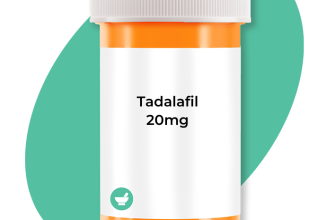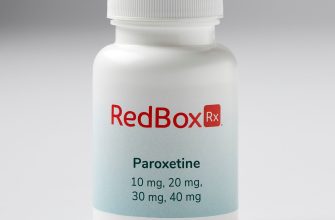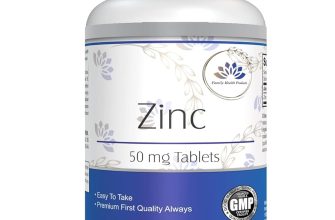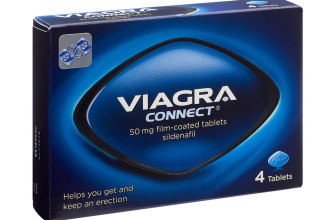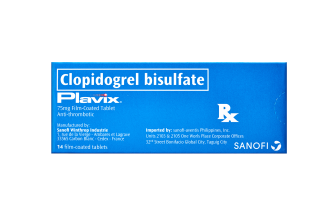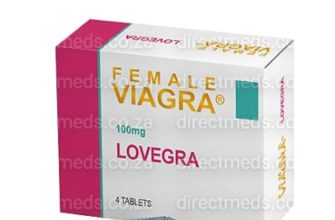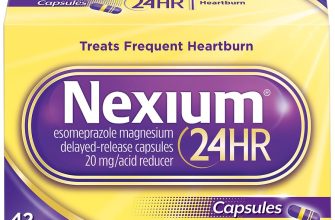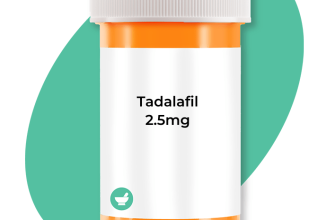The generic name for Levaquin is levofloxacin. This antibiotic belongs to the fluoroquinolone class, widely prescribed for treating various bacterial infections, including pneumonia, urinary tract infections, and skin infections. Understanding its generic name is critical for patients and healthcare providers alike, as it ensures clarity in prescriptions and discussions about treatment options.
Levofloxacin works by inhibiting the growth and reproduction of bacteria, making it an effective choice against a broad spectrum of pathogens. It’s important to recognize that, while Levaquin is the brand name, many pharmacies and healthcare professionals refer to the drug by its generic name, levofloxacin, particularly when discussing cost-effective alternatives.
Patients should consult their healthcare providers regarding the appropriate use of levofloxacin and be aware of potential side effects, such as gastrointestinal disturbances, tendon issues, and photosensitivity. Always follow your doctor’s instructions and report any unusual symptoms immediately for the best outcomes in treatment.
- Generic Name for Levaquin
- Usage and Dosage
- Side Effects and Precautions
- Understanding Levaquin and Its Uses
- Common Uses of Levaquin
- Mechanism of Action
- What is the Generic Name for Levaquin?
- Uses of Levofloxacin
- Dosage Information
- Comparison Between Levaquin and Its Generic Equivalent
- Mechanism of Action of Levaquin and Its Generic Name
- Targeted Bacterial Effect
- Pharmacokinetics and Tissue Penetration
- Common Dosages and Administration Guidelines
- Side Effects and Risks Associated with Levaquin
- Availability and Cost of Levaquin’s Generic Version
Generic Name for Levaquin
The generic name for Levaquin is levofloxacin. This antibiotic belongs to the fluoroquinolone class and effectively treats various bacterial infections, including respiratory and urinary tract infections.
Usage and Dosage
Levofloxacin is typically prescribed for infections caused by specific bacteria. The dosage varies depending on the type and severity of the infection. It’s crucial to follow the healthcare provider’s instructions and complete the entire course of treatment to avoid antibiotic resistance.
Side Effects and Precautions
Common side effects of levofloxacin can include nausea, diarrhea, headache, and insomnia. More serious effects, such as tendon damage or nerve damage, require immediate medical attention. Inform your doctor of any pre-existing conditions or other medications you are taking to mitigate risks.
Understanding Levaquin and Its Uses
Levaquin, or levofloxacin, is an antibiotic commonly prescribed for bacterial infections. Its efficacy against various pathogens makes it a preferred option for treating conditions such as pneumonia, urinary tract infections, and skin infections.
Common Uses of Levaquin
- Pneumonia: Levaquin effectively handles both community-acquired and hospital-acquired pneumonia.
- Urinary Tract Infections: This antibiotic is often prescribed for serious cases of UTIs, including complicated infections.
- Skin Infections: Levaquin can manage complicated skin and soft tissue infections.
- Sinusitis: In cases of acute or chronic bacterial sinusitis, Levaquin may be recommended.
Mechanism of Action
Levaquin operates by inhibiting bacterial DNA gyrase and topoisomerase IV, crucial for bacterial replication and repair. By disrupting these processes, it halts the growth of bacteria, allowing the immune system to effectively combat the infection.
When prescribed, consider discussing any pre-existing health conditions and current medications with your healthcare provider to avoid potential interactions. Following the prescribed dosage is crucial for successful treatment and to prevent resistance.
What is the Generic Name for Levaquin?
The generic name for Levaquin is levofloxacin. This medication, a fluoroquinolone antibiotic, is effective in treating various bacterial infections.
Uses of Levofloxacin
Levofloxacin is commonly prescribed for:
- Pneumonia
- Urinary tract infections
- Skin infections
- Chronic bronchitis exacerbations
Dosage Information
Dosage may vary based on the condition being treated. Typically, it is administered once daily, with the duration of treatment determined by your healthcare provider. It’s crucial to take the medication as directed to ensure effectiveness.
Always consult your healthcare provider for specific advice and information tailored to your health needs.
Comparison Between Levaquin and Its Generic Equivalent
Levaquin, with the active ingredient levofloxacin, is a widely prescribed antibiotic used to treat various bacterial infections. Its generic equivalent, levofloxacin, offers the same therapeutic benefits at a more affordable price point. Both formulations share identical active components, ensuring comparable effectiveness in fighting infections.
Levaquin is typically available in brand packaging, while the generic version may come with different labeling. Choosing the generic often leads to cost savings without sacrificing quality. Regulatory agencies ensure that generics meet strict standards for potency and purity, affirming their similarity to the brand-name drug.
Side effects for both Levaquin and its generic counterpart are largely the same. Patients may experience nausea, diarrhea, insomnia, or dizziness. Discussing these potential side effects with a healthcare provider ensures appropriate monitoring and management.
Dosage and administration methods remain consistent across both options. Physicians generally prescribe the same dosing regimen, so patients can expect comparable instructions regardless of the name on the prescription. Adhering to the prescribed course is crucial for optimal results.
Insurance coverage may vary. Some plans favor either the brand or generic, influencing out-of-pocket costs. Consulting with a pharmacist can clarify pricing differences and assist in selecting the best option based on individual circumstances.
In conclusion, choosing between Levaquin and its generic equivalent levofloxacin comes down to personal preference and financial considerations. Both options effectively treat infections while offering similar side effects and administration guidelines. Speak with a healthcare professional to decide which one aligns best with your health needs.
Mechanism of Action of Levaquin and Its Generic Name
Levaquin, with the generic name levofloxacin, works by inhibiting bacterial DNA gyrase and topoisomerase IV, two critical enzymes in DNA replication. This action effectively prevents the bacteria from replicating and repairing their DNA, leading to cell death.
Targeted Bacterial Effect
This fluoroquinolone antibiotic primarily targets gram-negative and some gram-positive bacteria. By interfering with the essential processes for bacterial survival and growth, levofloxacin demonstrates potent bactericidal activity. The selective inhibition of these enzymes ensures that human cells remain unaffected while eradicating the infection.
Pharmacokinetics and Tissue Penetration
Levofloxacin shows excellent tissue penetration, reaching high concentrations in respiratory, urinary, and soft tissue infections. Its bioavailability is about 100%, allowing for effective oral administration. This characteristic makes it a convenient option for treating various infections, including pneumonia and urinary tract infections, without the need for intravenous delivery.
Common Dosages and Administration Guidelines
The typical dosage of Levaquin (generic name for levofloxacin) for adults ranges from 250 mg to 750 mg, depending on the specific infection being treated. For mild to moderate infections, such as acute bacterial sinusitis or uncomplicated urinary tract infections, a dosage of 250 mg once daily for 7 to 14 days is common.
For more severe infections, such as pneumonia, a higher dose of 500 mg to 750 mg once daily may be indicated, typically for a duration of 5 to 14 days, based on the patient’s response and the type of infection. In cases of chronic bacterial prostatitis, a longer duration of therapy is often necessary, sometimes extending to 28 days.
Administer Levaquin as a single daily dose, taken at the same time each day to maintain consistent drug levels in the bloodstream. It can be taken with or without food, although taking it with food may help reduce gastrointestinal discomfort.
Hydration is essential while on this medication. Drink plenty of fluids to reduce the risk of crystalluria, a condition where crystals form in the urine. Avoid taking antacids, supplements, or medications containing magnesium, aluminum, iron, or zinc within two hours before or after taking Levaquin, as they can impact absorption.
Monitor for side effects, especially in patients with a history of tendon disorders, seizures, or renal impairment. Adjustments may be necessary for patients with severe renal dysfunction, where a dose reduction is often warranted.
Before starting treatment, assess for any drug allergies and inform the healthcare provider of all medications being taken to prevent potential interactions. Regular follow-up appointments can help evaluate the effectiveness of the treatment and make necessary adjustments.
Side Effects and Risks Associated with Levaquin
Levaquin, a fluoroquinolone antibiotic, carries several potential side effects that users should monitor. Gastrointestinal issues such as nausea, diarrhea, and abdominal pain are common. If these symptoms persist or worsen, consult a healthcare professional.
Some individuals may experience neurological effects like dizziness, headaches, or insomnia. Serious reactions could include peripheral neuropathy, which involves tingling or pain in the extremities. If you notice these symptoms, seek medical advice immediately.
Tendinitis and tendon rupture are significant risks, particularly in older adults or those taking corticosteroids. Be cautious with physical activities and report any sudden pain or swelling in the tendons, especially around the Achilles tendon.
Allergic reactions can occur, presenting as skin rashes, itching, or difficulty breathing. If you experience these symptoms, stop taking Levaquin and contact emergency services.
Long-term use of Levaquin may lead to serious complications, including Clostridium difficile infection, which can cause severe diarrhea. Always ensure a thorough evaluation if gastrointestinal symptoms escalate. Regular check-ins with your healthcare provider can help identify and manage these risks effectively.
Availability and Cost of Levaquin’s Generic Version
The generic version of Levaquin, known as levofloxacin, is widely available at pharmacies across the United States. Patients can typically find it at major retailers, online pharmacies, and local drugstores. Availability may vary slightly based on location, but it generally remains easy to obtain.
Cost for levofloxacin depends on several factors, including dosage, quantity, and pharmacy pricing. Without insurance, a typical price for a 750 mg tablet can range from $10 to $50 per pill. Many pharmacies offer discounts or generic pricing, making it more affordable.
| Pharmacy | Price for 750 mg (per pill) |
|---|---|
| CVS | $15 |
| Walgreens | $12 |
| Walmart | $10 |
| Rite Aid | $14 |
| Costco | $11 |
For those with insurance, the out-of-pocket expense may be significantly lower depending on specific coverage benefits. Check with your insurance provider for detailed coverage information related to levofloxacin.
Many patients benefit from discount programs and coupons available through various websites or pharmacy programs, further reducing their costs. Always inquire at your pharmacy regarding available discounts.
If your condition requires multiple prescriptions, some pharmacies offer bundled pricing, potentially leading to additional savings. Always consult with a healthcare provider for further information on dosage and alternatives to ensure the best treatment option.


